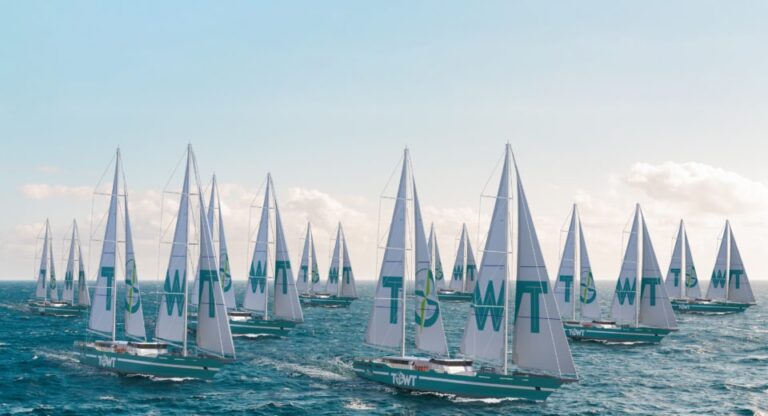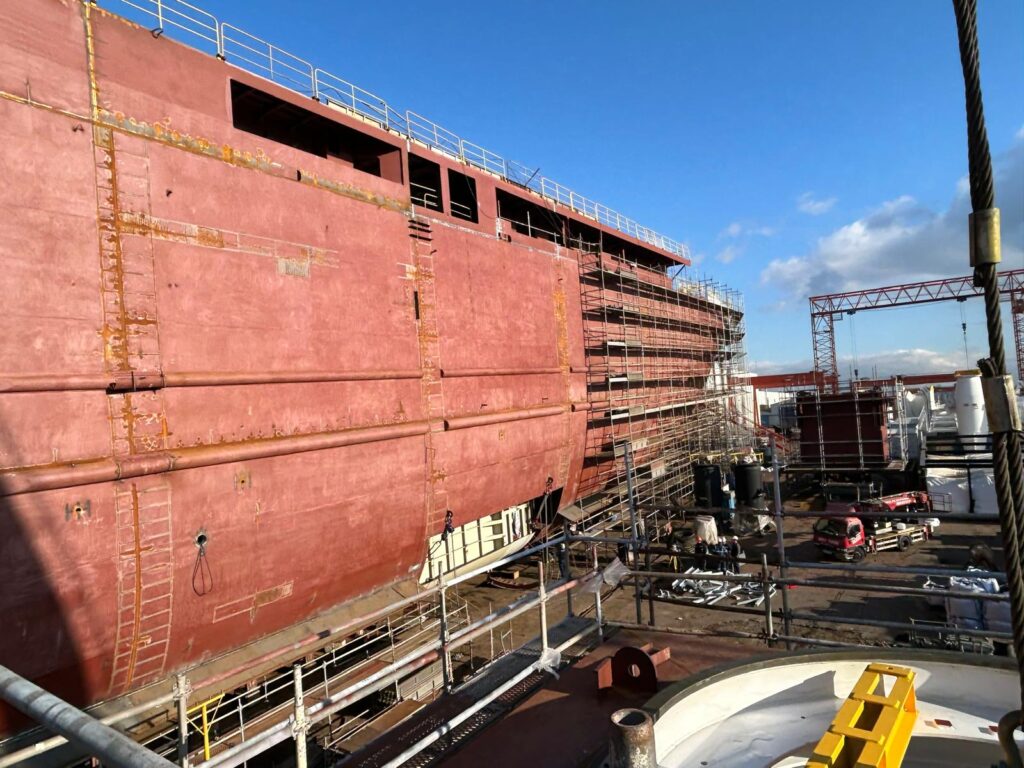
Illustration. Courtesy of Piriou
What is more, a total of fifteen vessels featuring wind propulsion are under construction, the French association, which brings together around 60 local players actively involved in the development of ship propulsion by wind, said.
Wind-powered vessels delivered in 2024
In January 2024, transportation company Grain de Sail christened its second ship, Grain de Sail II, described as the “world’s largest modern cargo sailboat”. The pure sailboat was built by local shipbuilder Piriou.
What is more, French sailing freight transport company TransOceanic Wind Transport (TOWT) launched its first two ships Anemos and Artemis at the end of the summer. The 81-meter innovative units have a 1,100-ton goods capacity and are designed to spend 320 days at sea per year.
They are the first and the second of eight sisterships ordered by TOWT which strives to enable carbon-free maritime transport with the new fleet. With eight ships, TOWT said it will contribute to saving around 40,000 tonnes of CO2 by transporting around 200,000 tonnes of goods.
Furthermore, Sailcoop inaugurated its catamaran Isabelle designed by VPLP Design and built by the Arsenal shipyard in La Pallice. After opening two regular sailing transport lines, the new shipowner has already transported more than 14,000 passengers between Concarneau and the Glénans archipelago, at a decarbonization rate of over 80%.
The four new units bring the French sailing fleet to eleven large cargo ships and several smaller ones such as work vessels such as Skravik, Morskoul, and Barbaranova, according to Wind Ship.
Wind ships under construction
Several windships are currently under construction. One of them is Neoliner Origin, a 136-meter-long roll-on/roll-off (RoRo) vessel being built at RMK Marine shipyard in Turkey for French startup Neoline.

Neoliner Origin at the shipyard in Turkey in December 2024. Courtesy of Neoline
Equipped with two Solid Sails of 1,050 square meters each provided by Chantiers de l’Atlantique, the wind-powered cargo ship is scheduled to enter service by mid-2025 on a transatlantic line, aiming to reduce fuel consumption and associated emissions by more than 80%.
Moreover, the construction of the first trimaran ordered by shipowner VELA started at the Australian shipyard Austal in late September 2024. Powered entirely by wind, this 67-meter aluminum trimaran will be able to carry approximately 600 pallets to ensure a ‘massive’ reduction in the carbon footprint of transportation.
In late March 2024, shipbuilder Chantiers de l’Atlantique cut the first steel for OE Corinthian, the first wind-powered cruise ship in the Orient Express Silenseas fleet. OE Corinthian is the first in a series of luxury cruise ships ordered in early 2023 by the French hotel group Accord for its subsidiary Orient Express. It is believed to be the ‘first cruise ship’ equipped with the Solid Sail propulsion system.
The keel of the Captain Artic, a 70-meter-long cruise ship equipped with photovoltaic sails developed by Cormoran and equipped by SELAR was laid recently, while the six sister ships of TOWT are gradually entering the Piriou shipyard.
In addition, the construction on the first of three Louis-Dreyfus Armateurs RoRo ships began in China in October 2024. The low-carbon vessels equipped with wind-assisted propulsion and methanol dual-fuel engines will be chartered to European aerospace giant Airbus.
Expansion on all fronts
Wind propulsion continues to enjoy momentum in France, as per the association. Local equipment manufacturers are boosting their production capabilities, with the official inauguration of the SolidSail Mast Factory in Lanester and the CWS factory in Saint-Nazaire expected in 2025.
What is more, the objective to win the international market is reflected in new approvals in principle such as the ones that French designer and manufacturer of wind propulsion systems OceanWings received from class societies DNV, BV and ABS.
The first half of 2024 was marked in particular by the signing of the ‘groundbreaking’ wind propulsion pact seeking to decarbonize the shipping industry.
The agreement formalizes the shared will of the signatories – the French government on one side and the maritime, logistics, and financial ecosystem on the other, in addition to financiers. The pact aims to support the French wind-assisted ship propulsion sector in the next five years.
“The instability within the government does not make the task easier despite the work of the services alongside the sailing sector. We very much hope that 2025 will allow the commitments made to be reflected more concretely,” Association Wind Ship concluded.